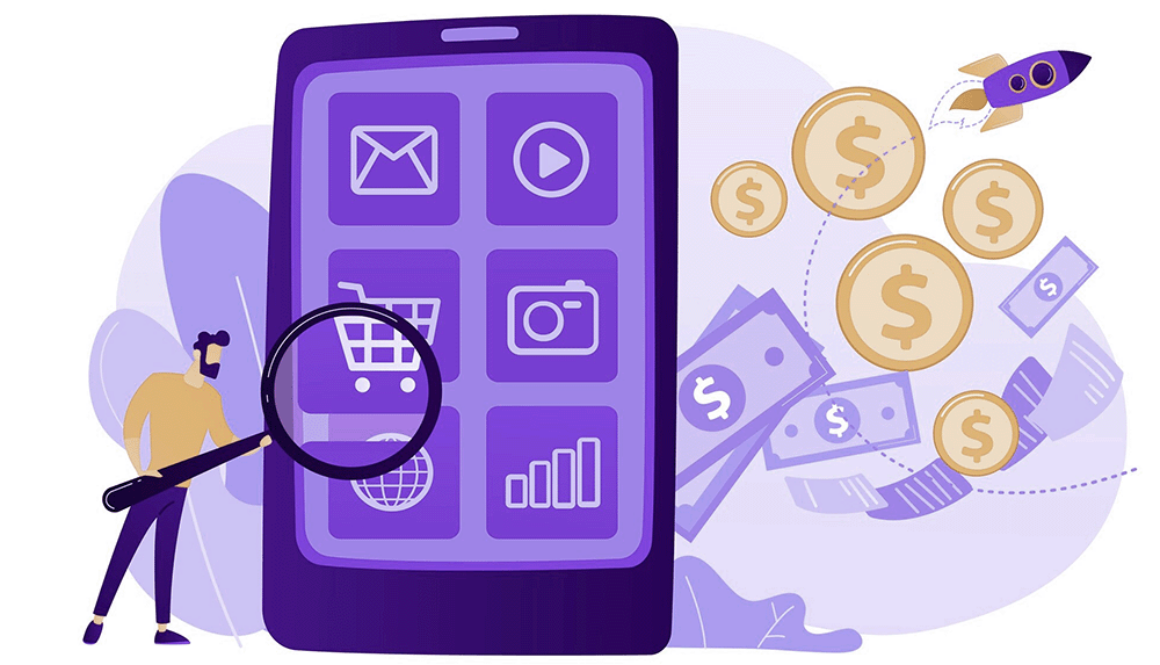Mobile Apps vs. Websites: The Consumer Preference Revolution
A recent survey by Bryj, the end-to-end, AI-powered mobile app solution, unveils a significant shift in consumer preferences toward mobile apps.

A recent survey by Bryj, the end-to-end, AI-powered mobile app solution, unveils a significant shift in consumer preferences toward mobile apps.

In the ever-changing world of mobile app development, the Proof-of-Concept (POC) has become increasingly important. As businesses compete to capture their audience’s attention in the digital realm, the POC approach provides a strategic pathway to success. In this article, we explore the essence of POC and why it’s a game-changer for businesses looking to thrive in the competitive app market.

In today’s ever-evolving retail industry, integrating e-commerce and digital technologies has become both a trend and a necessity. As consumers increasingly turn to online platforms for their shopping needs, retailers have had to adapt, embracing digital solutions to streamline operations and meet the changing expectations of tech-savvy consumers. Mobile apps have undeniably revolutionized how retailers interact with their customers, elevating the shopping experience to new heights.

Mobile apps are preferred over PWAs and mobile websites mainly because of their unmatched user experience (UX). Apps are built to work seamlessly on a specific platform, taking full advantage of device capabilities like GPS, camera, and push notifications. As per a Comscore report, users spend 87% of their mobile time within apps, indicating the high engagement levels they provide.

In-app purchases account for $380 billion. The key takeaway is that mobile apps have become essential for companies looking to boost their bottom line. But what makes them so effective? Apps provide easy access to products and services anytime, anywhere. They facilitate direct engagement and transactions with customers.

With the holiday season fast approaching, millions of users will be unwrapping new devices and searching for exciting apps to download and enjoy. However, standing out in competitive app stores can be daunting. You need a robust App Store Optimization (ASO) strategy to ensure your app gets the attention it deserves. App Store Optimization (ASO) is the process of optimizing different elements of your app’s store listing to enhance visibility, increase downloads, and ultimately improve revenue.

In today’s world, where a significant portion of the population owns smartphones, mobile apps have emerged as a powerful and efficient way for businesses to engage with their customers, streamline operations, and boost growth. In this blog post, we will explore the top 20 benefits and uses of mobile apps that businesses should leverage to stay ahead of the competition.

In today’s digital era, mobile apps have become vital for businesses to stay relevant and competitive There are several advantages to utilizing apps, such as increased convenience, streamlined operations for staff, and better customer engagement in both B2B and B2C interactions. As technology progresses, apps have become crucial in streamlining business processes and establishing strong customer loyalty, transforming them from a luxury to a necessity.

The rise of mobile technology has changed the way customers interact with brands and purchase products creating what’s known as customer experiences (CX). Customers now expect a seamless and personalized shopping experience across all touchpoints, including mobile apps, social media, and in-store experiences. These next-gen shoppers want speed and ease with a tailored, elevated experience.
Major businesses and brands like Browns Fashion, Drapers, Adidas, Zara, and Saks Fifth Avenue are embracing this challenge and investing in immersive, personalized experiences. The future of retail favors those that focus on the consistent and engaging CX only mobile apps can provide.

The world of retail has changed dramatically in the last few years, thanks to the increasing role of mobile technology. From voice commerce to augmented reality, personalization to same-day delivery, mobile is now powering the top retail trends.
In fact, the entire M-Commerce market revenue was projected to exceed $430 billion last year and increase to $710 billion by 2025. We are seeing an increase in the customer base for businesses each moment with innumerable expectations from a never-ending stream of users. All, a reflection of the break-neck speed evolution in the mobile app development industry.
While a lot of new trends in mobile app development are emerging this year, here are a few of the top mobile app development trends Retailers should not ignore.